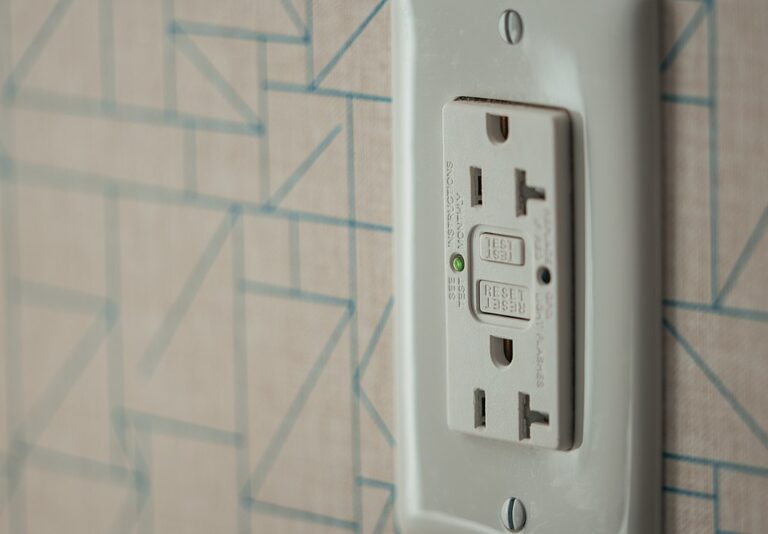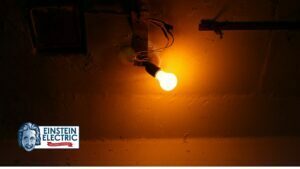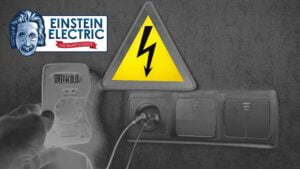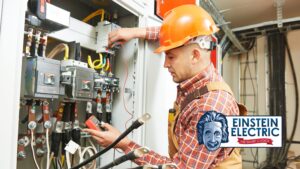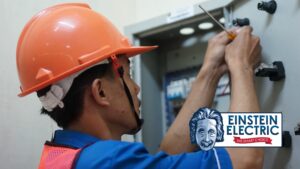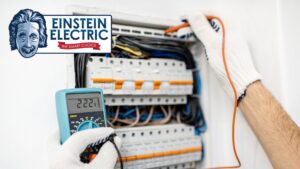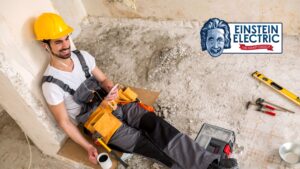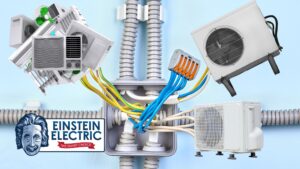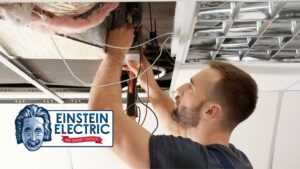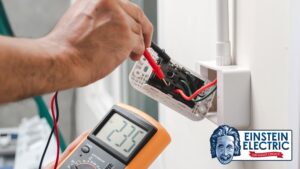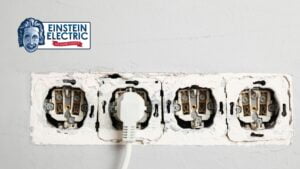Ground Fault Circuit Interrupters (GFCIs) are devices designed to protect people from electrical shock hazards in the home or workplace. In simple terms, they monitor the current flowing through a circuit and will shut off the power if there is a ground fault. But what exactly is a ground fault? It’s when the electrical current is flowing through an unintended path, such as a person’s body, instead of the intended path.
So where should you install GFCIs in your home or business? According to the National Electric Code (NEC), GFCI protection is required in certain areas, including bathrooms, kitchens, garages, basements, and outdoor areas. In addition, all 125-volt through 250-volt receptacles supplied by single-phase branch circuits rated 150-volts or less to ground should have GFCI protection for personnel.
It’s important to note that GFCI protection is not just limited to outlets, but can also be provided by circuit breakers. Some customers may not want GFCI outlets installed, in which case an electrician may suggest a GFCI breaker to protect the entire circuit.
If your GFCI receptacle trips, you can simply push the reset button located on the device. However, if the reset button does not work, there could be two reasons: there is no power to the receptacle, or the GFCI receptacle is faulty.
In conclusion, GFCIs are a vital component in protecting you and your loved ones from electrical hazards. Make sure to install them in the required areas and test them regularly to ensure they are functioning properly. And if you encounter any issues with your GFCI receptacle, it’s best to contact a licensed electrician to diagnose and fix the problem.
Where in my house do I need to have a GFCI?
The National Electric Code (NEC) is a standard that outlines the minimum safety requirements for electrical installations in homes and businesses across the United States. Article 210-8a of the NEC specifies the requirements for GFCI protection in dwelling units, which includes homes and apartments.
According to Article 210-8a, GFCI protection is required in various areas of a dwelling unit, including bathrooms, garages or outbuildings, outdoor areas, crawl spaces, basements, kitchens, sinks, boathouses, laundry rooms, and indoor damp or wet locations. This means that any 125-volt through 250-volt receptacles or outlets supplied by single-phase branch circuits rated 150-volts or less to ground in these areas must have GFCI protection.
The reason for this requirement is to prevent electrical shocks and electrocution, particularly in areas where water is present. For example, a GFCI outlet installed in a bathroom will protect you from electrical shocks while using electrical devices such as hairdryers or electric razors, which may come into contact with water.
It’s important to note that GFCI protection is not just limited to receptacles, but also includes devices such as light fixtures, exhaust fans, and other electrical equipment installed in these areas. In addition, any GFCI-protected outlet in a dwelling unit must be labeled as such to indicate that it is protected.
Overall, Article 210-8a of the NEC ensures that the necessary safety measures are in place to protect individuals from electrical hazards in their homes. By following these guidelines and ensuring that GFCI protection is installed where required, homeowners can have peace of mind knowing that their electrical systems are up to code and their families are protected from electrical shocks and electrocution.
Do I need GFCI in my business or a building that is a non-dwelling building?
Article 210-b of the National Electric Code (NEC) outlines the requirements for Ground-Fault Circuit Interrupter (GFCI) protection in non-dwelling buildings, such as commercial and industrial buildings. The purpose of GFCI protection is to minimize the risk of electrical shock and electrocution.
According to Article 210-b, all 125-volt through 250-volt receptacles supplied by single-phase branch circuits rated 150-volts or less to ground must have GFCI protection for personnel. This includes areas such as bathrooms, kitchens, rooftops, outdoor areas, sinks, indoor damp or wet locations, locker rooms, garages, accessory buildings, service bays, unfinished areas of basements, laundry rooms, and bathtubs and showers.
In addition to receptacles, GFCI protection is also required for other electrical equipment, such as lights, fans, and appliances, in these areas. It’s important to note that GFCI protection is not required for fixed equipment that is permanently installed and not easily moved.
Similar to Article 210-8a for dwelling units, any GFCI-protected outlet in a non-dwelling building must be labeled as such to indicate that it is protected. This labeling ensures that individuals working in these buildings are aware of the safety measures in place and can take the necessary precautions to prevent electrical hazards.
By following Article 210-b of the NEC, non-dwelling building owners can ensure that their electrical systems are up to code and that their employees and customers are protected from electrical hazards. Regular maintenance and testing of GFCI protection is also recommended to ensure that it is functioning properly and providing adequate protection.
Ground Fault Circuit Interrupters (GFCIs) are critical safety devices that protect people from electric shock hazards in homes and businesses. They are designed to detect ground faults, which occur when an electrical current flows outside its intended path, such as through a person’s body or through water.
Here’s a guide to GFCIs that covers everything you need to know about these devices:
- What is a GFCI? A GFCI is an electrical device that quickly shuts off power to an electrical circuit if it detects a ground fault. It is designed to protect people from electric shock hazards caused by ground faults.
- Where are GFCIs required? GFCIs are required by the National Electric Code (NEC) in specific areas of a building, including bathrooms, kitchens, garages, and outdoor areas. GFCIs are also required for receptacles located within six feet of a sink, as well as in laundry and utility rooms.
- Types of GFCIs There are two types of GFCIs: receptacle GFCIs and circuit breaker GFCIs. A receptacle GFCI is installed in the outlet, and a circuit breaker GFCI is installed in the electrical panel. Both types offer protection against ground faults, but a circuit breaker GFCI offers protection for an entire circuit, whereas a receptacle GFCI only protects the outlet where it is installed.
- How do GFCIs work? GFCIs work by constantly monitoring the electrical current in the circuit. If the current flowing in the hot wire does not match the current flowing in the neutral wire, the GFCI will quickly trip and shut off power to the circuit.
- Testing GFCIs It is important to test GFCIs regularly to ensure they are working properly. To test a GFCI, simply press the test button on the outlet. The outlet should shut off power, indicating that the GFCI is working correctly. To restore power, press the reset button.
- Maintaining GFCIs To maintain GFCIs, keep them free of dust and debris, and make sure they are installed in a location that is easily accessible. If you notice that a GFCI is not working properly, replace it immediately.
In conclusion, GFCIs are essential safety devices that protect people from electric shock hazards. By understanding what GFCIs are, where they are required, how they work, and how to maintain them, you can ensure that your home or business is safe from electrical hazards.

